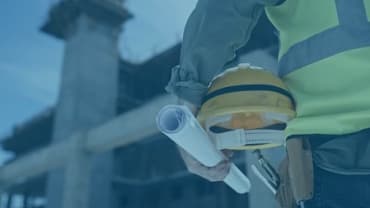Following the Prime Minister's address to the nation on the evening of March 23 and the unprecedented measures that are being implemented in order to fight COVID-19, the closure of construction sites across the UK is now looming.
Or is it? The negative effects of COVID-19 on the construction industry will now become even more real as the days and weeks go on but the advice so far seems to create more questions than answers.
Should construction sites close – and if so, what factors should be considered when implementing a temporary shutdown?
Government guidance
The guidance provided by the UK Government on March 23 did not specifically cover construction sites, with Boris Johnson stating that travelling to work is only permitted where this is "absolutely necessary". However, on the morning of March 24 Chancellor Rishi Sunak confirmed that constructions sites are being allowed to remain open, if done safely.
This is somewhat contradictory to the "stay at home" message that is being broadcast across the country. Nicola Sturgeon and Sadiq Khan have advised that all construction sites should close, and further guidance is expected from the Scottish Government in the coming days.
If construction sites choose to stay open, then government guidance on social distancing must be followed. For contractors, consultants and sub-contractors, this would be both impractical and uneconomical. In most cases it would be impossible to comply with the prohibition against gatherings of more than two people and two metre distancing.
Even putting the execution of the works to one side, welfare facilities on sites are shared spaces, often with numerous workers occupying them at any one time and in close proximity.
Cost implications for contractors and employers
Contractors seeking to run sites in compliance with the Government guidance could soon find themselves racking up additional labour costs. Those on fixed price contracts will be reluctant to proceed on that basis.
Construction companies will want to protect their businesses and workforces both in relation to health and finances. Numerous firms have already taken the difficult decision to wind down/close their sites. By doing so they are minimising their costs and, importantly, complying with Government guidance aimed at slowing the spread of the coronavirus.
Six key factors to consider for site closures
For employers and contractors that are taking matters into their own hands and stopping works,there are six key considerations to remember when temporarily closing sites.
Insurance
Who is insuring the works? Check contractual provisions: is the All Risks Policy still in date? Does it adequately cover all the necessary interests? Speak to your insurance brokers.
Communicate
Communication lines should be established between all parties (including the supply chain) to a construction project as soon as possible, to implement arrangements that safely secure the site. Site managers should ensure they have up to date contact information for all key personnel.
Social distancing
Ensure that all individuals still on-site follow current UK Government and Scottish Government guidance and measures in relation to social distancing.
Health & Safety
Do not compromise any health and safety requirements. In England, the Construction Leadership Council has advised: "if an activity cannot be undertaken safely due to a lack of suitably qualified personnel being available, or social distancing being implemented, it should not take place."
Subcontractors
Contractors must communicate with their subcontractors and ensure they too are fully co-operative and following all necessary guidelines.
Security
Secure the site by ensuring appropriate fencing/barricades/hoarding is erected around the site boundary to prevent any access being taken. Similarly, ensure any materials, machinery, plant, tools and other equipment are locked up, secure and out-of-sight.
Does the contract set out any specific requirements in respect of securing the site? Is there time to implement further measures? Test your alarm and any CCTV – ensure these are closely monitored and fully operational. If power to sites is compromised, consider alternative available means of security/surveillance.
Contributor
Partner












